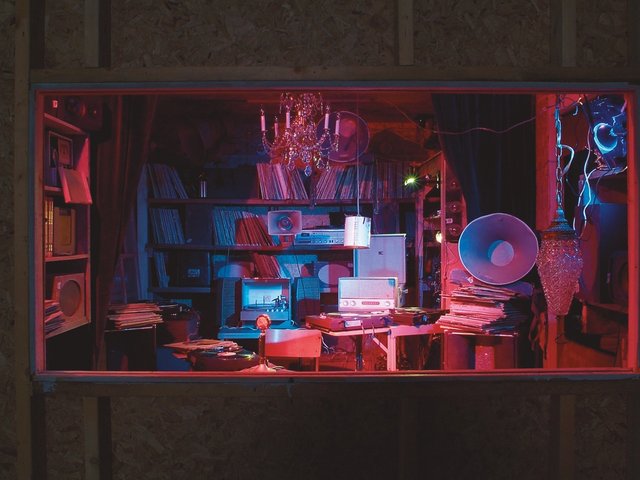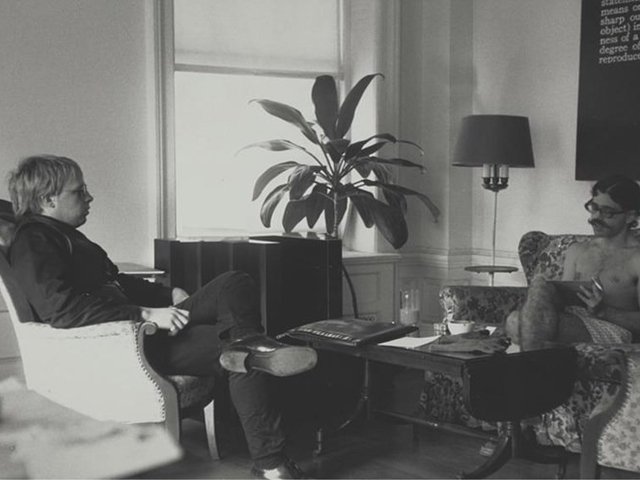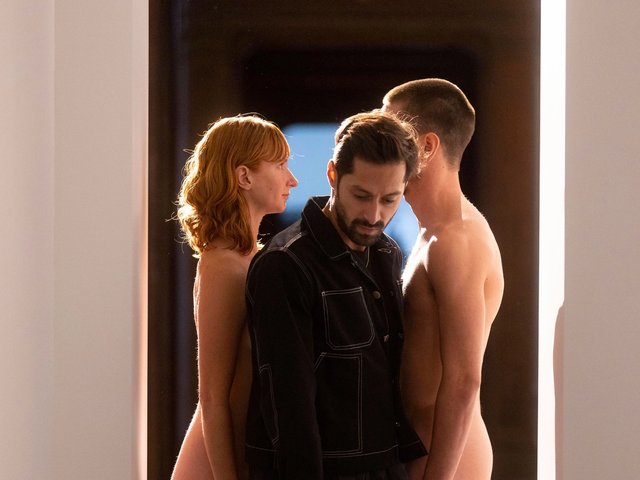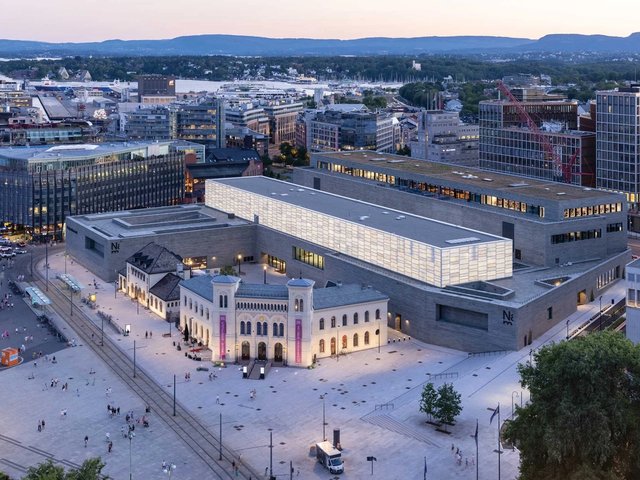Read more about Norway's new National Museum here
Geir Haraldseth and Randi Godø are going where many curators fear to tread. For the big opening exhibition of the National Museum, they have curated an exhibition, I Call it Art, that will provide a snapshot of Norwegian contemporary art. The twist: they didn’t know most of the artists before they started work on the show.
“The idea was not to show artists that are in the collection,” Haraldseth says. “Not to show work that was already legitimised by the museum but to look beyond.” To do this they embarked on an exhaustive survey of Norway’s contemporary art scene, getting out of Oslo and travelling the prodigious length of the country, hunting down artists who had escaped the beam of the art world’s Sauron eye.
The survey was a concerted effort by the curators to get away from their in-built biases—the sense that they are the experts. While travelling, they were also trying to figure out why people had not already been collected by the museum. “It could be because of the distance, it could be because they are working in art that is not necessarily in the specific categories that the museum tends to collect,” Haraldseth says. “We found a lot of people sharing personal perspectives or working with politics, who had to go abroad to get their education because in Norway they were told, ‘It is too personal, stay away from that.’”

Ingrid Toogood’s L longed for it (2019) Courtesy of the National Museum of Art, Architecture and Design
Even so it was not possible to totally escape biases. “Travelling made us realise that we’d say to people, ‘We’re coming to your town, please select 10 artists we should know about’, then there’s a pre-selection, there’s already a filtering for us, so we don’t really get to know the expanded universe of the art world. We needed to find a way to go beyond those filtering methods, because people would pick artists they think we’d be interested in. They would mirror us back. So we had an open call,” Haraldseth says. “Which museums do not do!” Godø adds.
The open call netted more than 1,000 submissions—whittled down to around 150 artists for the show. “There were so many artists who applied who we didn’t know very much about, so it was very eye-opening to see that there are many different worlds out there that we as arts professionals don’t really have that much knowledge about,” Haraldseth says. “We wanted to ensure there was an even distribution of reasons why they were not in the collection. Young people, old people, people from all over the country. That was one thing we were paying attention to so you wouldn’t be able to categorise this as just the outsider show.”
Many of the artists, such as Goro Tronsmo, have practices that resist museumification—she has constructed a makeshift living space in part of the gallery in which performances will take place. Performance collective Susie Wang normally present their work in theatres; they will put on a gory body-horror performance in a specially created stage in the centre of the space, the nearby paintings covered to protect them from splashes of fake blood. The exhibition will host a wide range of live events while video works will be shown online so people can watch them from home.

Vilde von Krogh's installation The well of Urd / Ragnarok (hear me in silence) (2021-22) Courtesy of the National Museum of Art, Architecture and Design
Some featured artists have a high profile in other parts of the Norwegian art world. Borgny Svalastog has made more than 100 commissions for churches, creating work that mixes her personal stories of illness with tales from Norse mythology and Christian liturgy. Vilde von Krogh meanwhile has created her own institution, running a prestigious but fiercely independent Norwegian art school. Her work in the exhibition is a large assemblage-based sculpture, rich with narrative threads and animated by movement, sound and light.
The result is a chaotic but surprisingly cohesive show that runs the gamut from Heath Robinson-style homemade musical instruments to subtle process-led and nature-inspired paintings. Humour is a common thread, with a figurative painting satirising the Norwegian royal family, and a coffee liqueur fountain shaped like an anus. But there is also an earnest side to the work, with many pieces exploring personal stories, identity and nationality.
This will be the first exhibition in the museum’s Light Hall—which offers a very different kind of space to the more traditional galleries below. As the walls are made of thin translucent marble, sandwiched between glass, the light can stream in from all sides; however it means you can’t hang anything on those exterior walls. But the challenge helped push the curators and exhibition designer Diogo Passarinho to innovate. “It gave us permission to do something completely different,” Haraldseth says. “We can’t work in a normal way because we don’t have a normal space, so we need to do something out of the ordinary.”
The exhibition is divided into three sections. In one, Tronsmo’s architectural interventions create a maze-like, even domestic feel. In the central section, paintings hang from freestanding metal frames, inspired by Lina Bo Bardi’s experimental exhibition designs at São Paulo Museum of Art in the 1960s. In the third space, paintings hang dramatically from the ceiling, reminiscent of salon hangs.
The last part of the exhibition is a small room that will host a changing display of works chosen not by the curators, but by a computer algorithm. Curatron by artist Cameron MacLeod is a piece of software that analyses the relationship between the artists—each were asked who they would most like to be shown alongside—to pick a group of works that are strongly connected. Any fears (or hopes) that museum curators may soon be replaced by AIs are unfounded however: the first selection made byCuratron features only artists from the centre of the Norwegian art world, Oslo. Even computers find it hard to look beyond the familiar, it seems.
• I Call it Art, 11 June-11 September 2022

Grayson Perry's Selfie with Political Causes (2018) © Grayson Perry. Courtesy the artist, Paragon Press and Victoria Miro
More to see: What else is on show in the museum’s first year
The collection, from 11 June
The main collection hang includes more than 5,000 works from antiquity to the present day across two floors and 87 rooms. As well as paintings and sculptures, there are galleries devoted to fashion, design and architecture.
East of the Sun and West of the Moon, 11 June–30 December 2022
Watch out for trolls! The first exhibition in the museum’s dedicated prints and drawings gallery will feature fragile original drawings from early Norwegian illustrated children’s books.
Piranesi and the Modern, 8 September 2022-8 January 2023
The name of Italian etcher Giovanni Battista Piranesi is synonymous with his elaborate and atmospheric architectural fantasies. This exhibition shows his influence on films such as Star Wars and Metropolis, and artists and architects such as Julie Mehretu and Rem Koolhaas.
Fredriksen Family Commission: Laure Prouvost, 3 November 2022-12 February 2023
French artist Laure Prouvost is the first to create a commission for the Light Hall, her largest work to date.
Grayson Perry, 10 November 2022-26 March 2023
Perry’s first solo exhibition in Norway will cover the full breadth of his work from the 1980s onwards.
Carroll Dunham, Spring 2023
The second exhibition in the prints and drawings gallery will be of this American artist, known for his often brutally direct paintings, sculptures and prints.
Music and Art, Spring 2023
The National Museum will be playing to its strengths with this interdisciplinary exhibition bringing together rare string instruments with artworks that feature music.
Louise Bourgeois, Spring 2023
A major exhibition in the Light Hall, with over 100 works from across her career.
Formafantasma: On Wool, 2023
The Italian design duo Formafantasma—who recently worked on the exhibition design of the Central Pavilion at the Venice Biennale—explore the materiality of wool alongside its economic, social and biological factors.
• Read more about Norway's new National Museum here






